
Care and feeding of Birdwing butterfly caterpillars
Charlotte Varela Digital Content Manager You might be able to identify some of the most common British butterflies and moths, but what about their caterpillars? Take a look at our tips for identifying 10 of our most common British caterpillars, find out what they eat and when and where to spot them. Fact file Length: 35mm Foodplant: stinging nettle

Black Fuzzy Caterpillar Owlcation
Browse Getty Images' premium collection of high-quality, authentic Black Spiky Caterpillar stock photos, royalty-free images, and pictures. Black Spiky Caterpillar stock photos are available in a variety of sizes and formats to fit your needs.
Black Spiky Caterpillar. I found this beautiful caterpillar on a walk back in August and was
The Oak Eggar caterpillar grows to about 75mm and is commonly found in many parts of the British Isles. It is commonest on open heath and moorland and not associated with oak trees as its name would suggest. By late spring it is fully grown and can often be found lying on top of low vegetation.

Black Caterpillars An Identification Guide to Common Species Owlcation
Black spiky caterpillars are unusual types of butterfly or moth larvae. The dark-colored, worm-like bugs can have a menacing appearance with their jet-black bodies, light or white markings, and fleshy spines or spikes on their body. Black caterpillars are typically not venomous despite their spikes because they don't contain poison-filled spines.
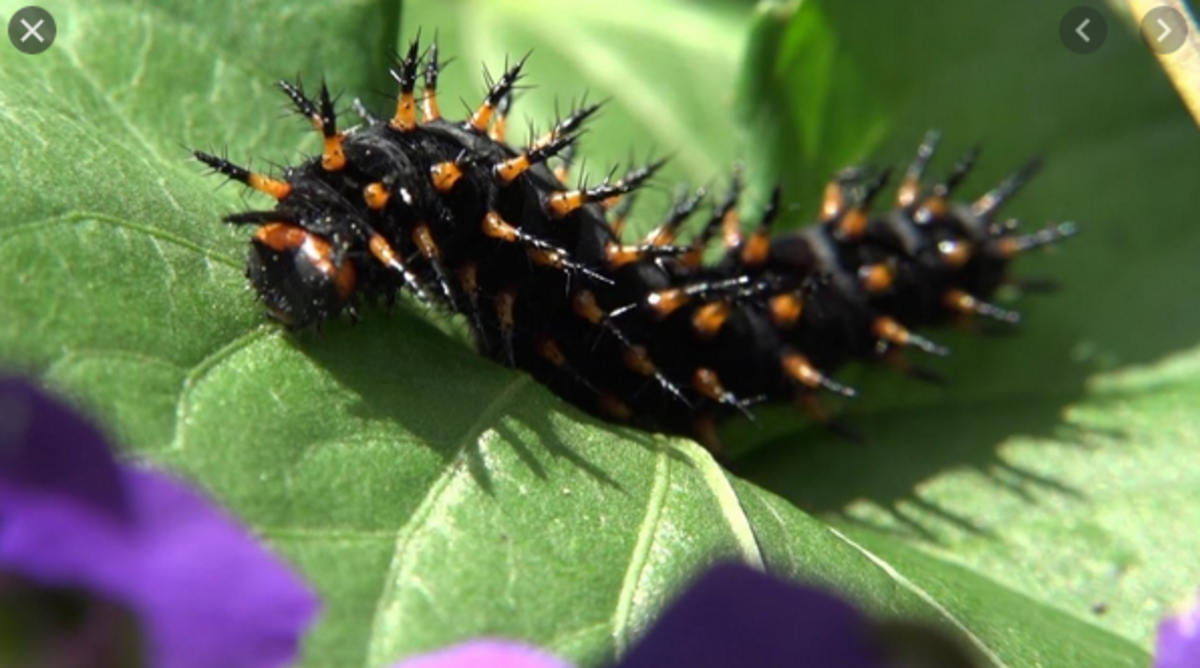
Black Caterpillars An Identification Guide to Common Species Owlcation
This caterpillar identification guide is accurate and easy to use. Find your caterpillar's name, type, diet, rarity, if it's poisonous, and more! Skip to main content. STEM.. Black or brown. One inch or more. Yes. 5, 12, 19, Black or brown. One inch or more. No. 9, 21, 26, 27, 30, 31. Numerical Order of Caterpillars in This Guide #1-10 #11.

Black Caterpillars An Identification Guide to Common Species Owlcation
The caterpillar (larva) picture galleries contain photos of many of the most distinctive caterpillars of butterflies and moths found in the British Isles, mainland Europe, North America and other parts of the world. Photographs received as part of identification enquiries may also feature in the following galleries -. British moth caterpillars.
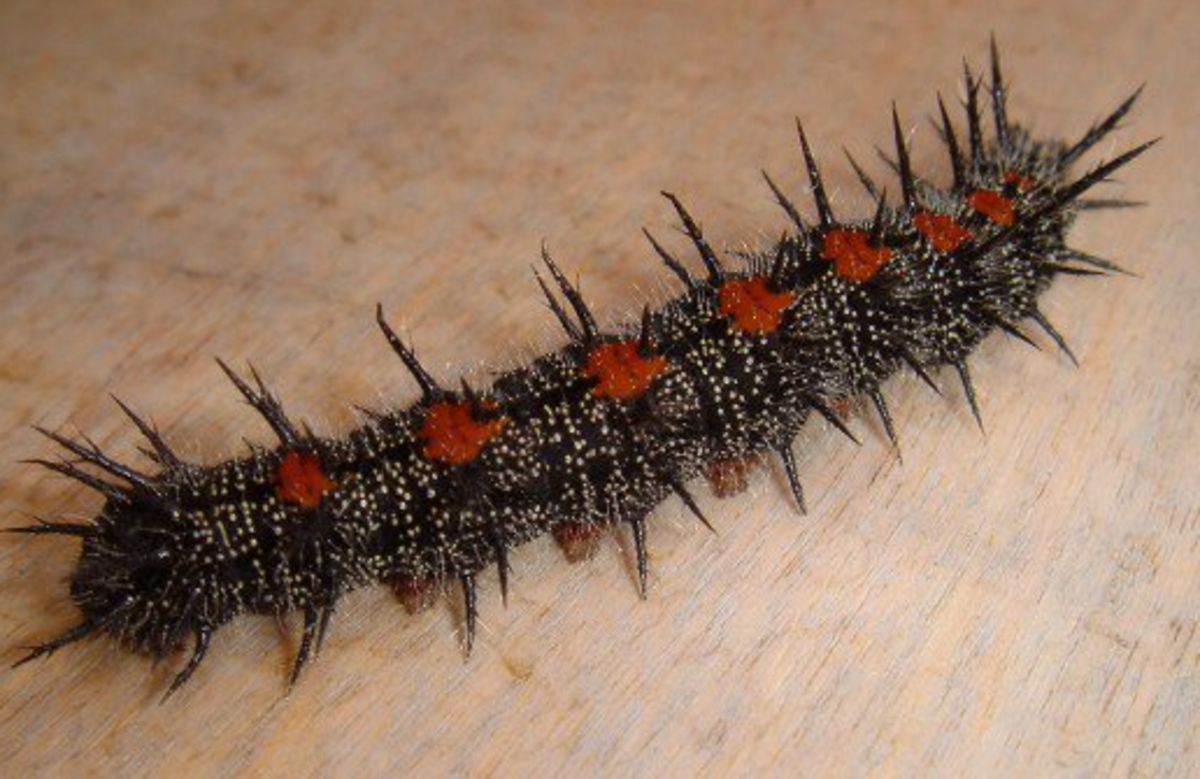
Black Caterpillars An Identification Guide to Common Species Owlcation
7. Spicebush Swallowtail Caterpillar. As it matures, the caterpillar develops a green body with large "eyespots" that mimic the appearance of a snake's head, deterring predators. The spicebush swallowtail caterpillar, scientifically known as Papilio troilus, is a unique and cleverly camouflaged species.
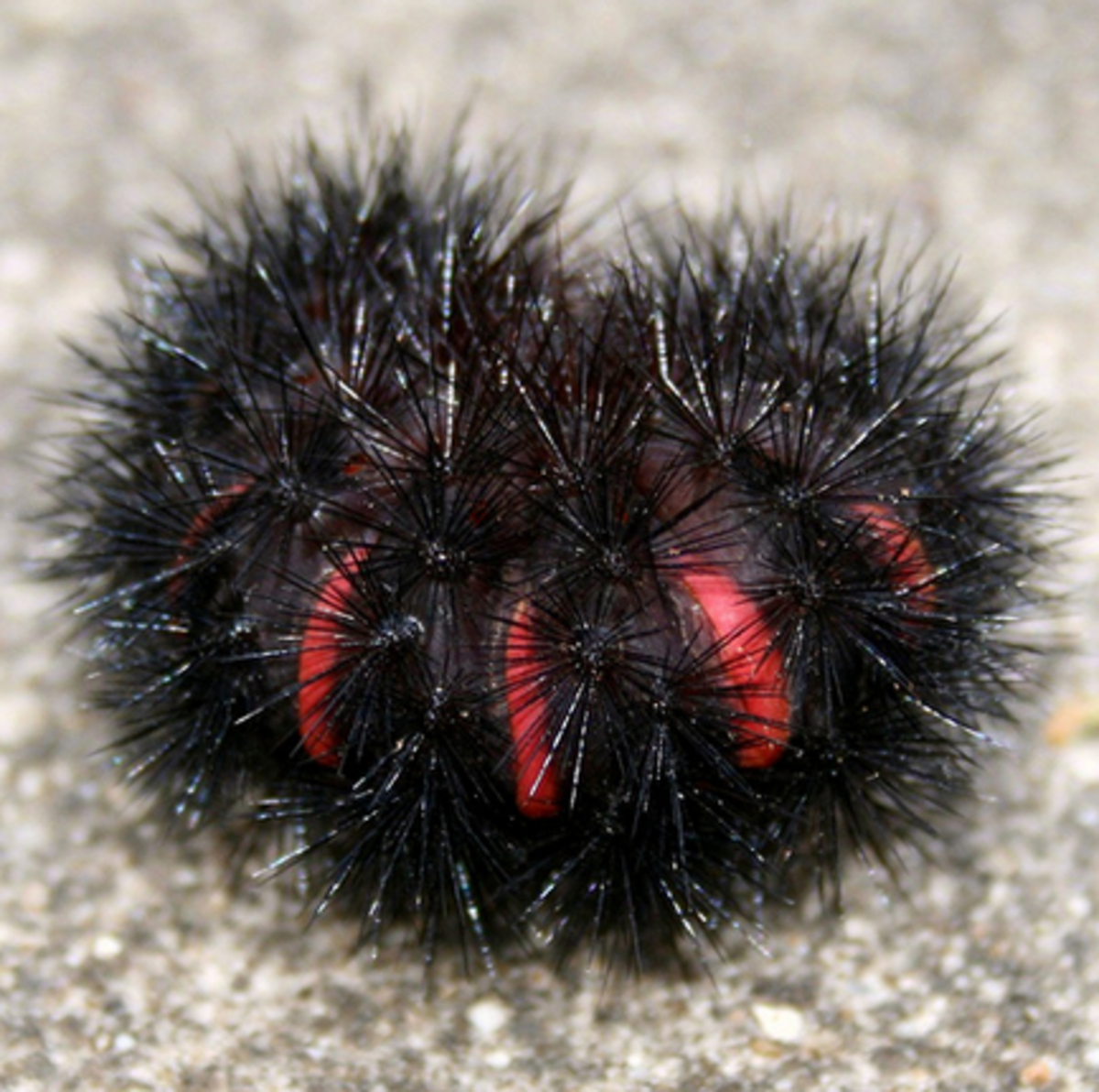
Black Caterpillars An Identification Guide to Common Species Owlcation
A caterpillar is the larval stage of a moth or butterfly. It is the second part of their four-stage life cycle (egg, larva, pupa, adult). Caterpillars have long, worm-like bodies with six true legs. They can also have a variable number of stumpy false legs (called prolegs), which help them to move and cling to things.
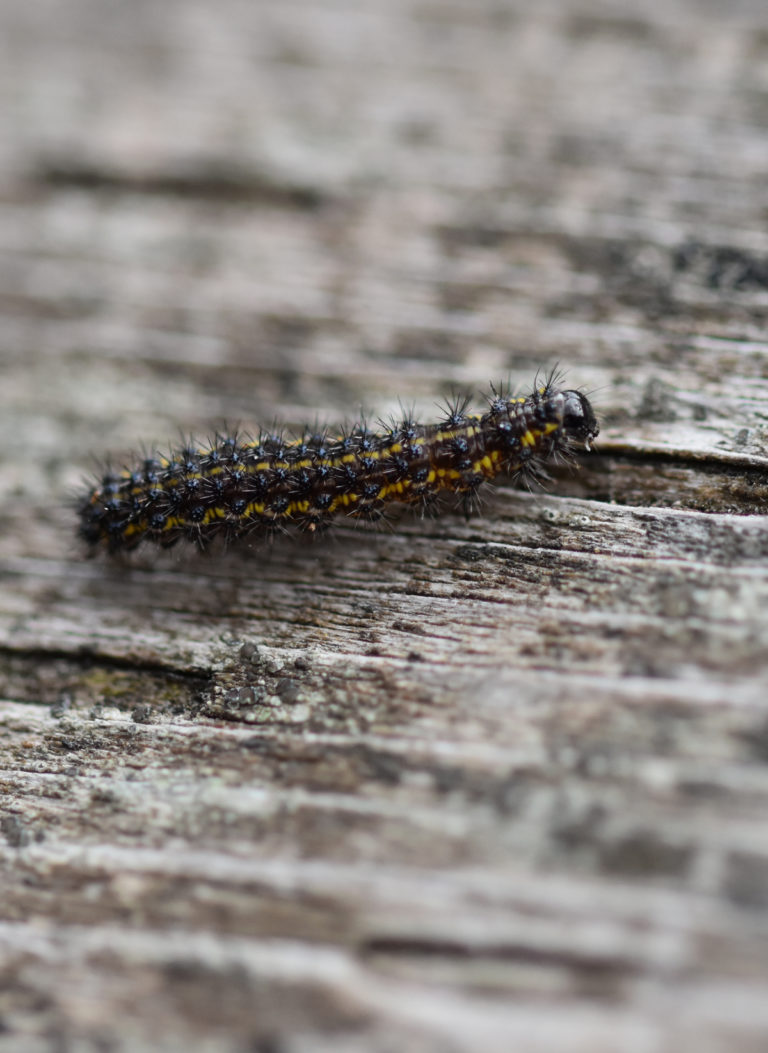
What Small Black Caterpillar Has Black Warts, Tufts of Spiky Hair and Yellow Stripes? Natural
Description: Up to 7 cm long. Dark and covered with brown hairs and golden speckles. A row of white hairs runs down each side of the body. Fox moth caterpillar ©David Longshaw Fox moth When & where: June-April, most obvious in spring. Common habitats include heathland and coastal grassland. Description: Up to 7 cm long.

black spiky caterpillar with white bands Spilosoma congrua
A caterpillar is the larval stage of a moth or butterfly. It is the second part of their four-stage life cycle (egg, larva, pupa, adult). Caterpillars have long, worm-like bodies with six true legs. They can also have a variable number of stumpy false legs (called prolegs), which help them to move and cling to things.

Tortoiseshell caterpillars congregating on their favourite food nettle leaves
Fox moth When & where: June-April, most obvious in spring. Often heathland and coastal grassland. Description: Up to 7 cm long. Hairy, with long dark hairs on the sides of the body and shorter orange hairs on top. Young caterpillars are dark with orange bands. Oak eggar When & where: August-June.

Black spiky caterpillars Hemileuca
Comma butterfly caterpillar. 1 1/3in, black and brown. Just as the adult comma is a master of camouflage, resembling, when at rest, a tattered leaf, so its caterpillar is equally adept at disguise. After each shedding of the skin, the caterpillar looks increasingly like a bird dropping. When fully mature, it's tan, with a bright splash of white.
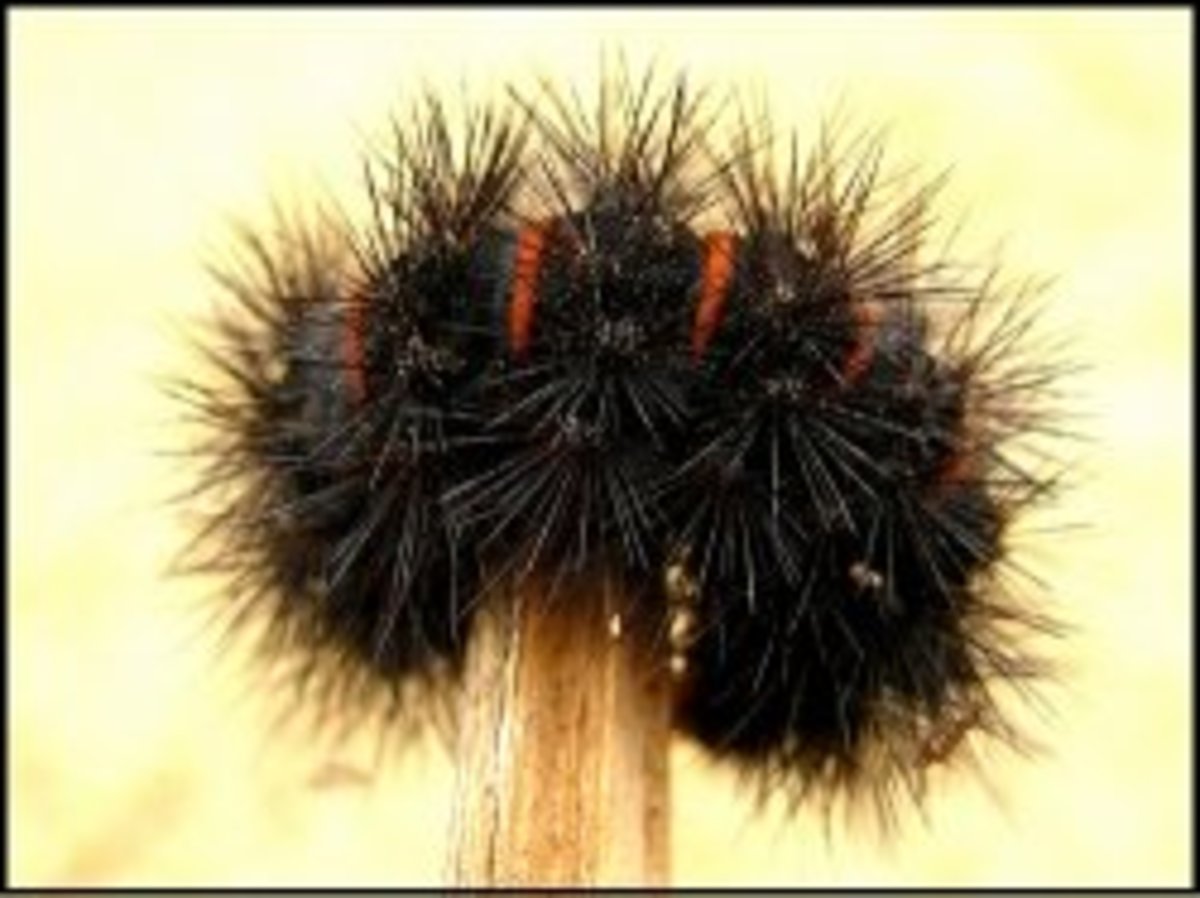
Black Fuzzy Caterpillar Owlcation
Also called an eyed-tiger moth caterpillar or commonly a "woolly bear", this type of caterpillar has black spikes all over its body, giving it a fuzzy look. It has red or orange bands spread over the fuzz, making it look a bit like a black bear with belts on it.

Black Spiked Caterpillar Caterpillar, Insects, Spike
Caterpillars are the eating and growing stage of the butterfly or moth. While a few might be considered minor pests because they nibble prize leaves or veg, most are discreet and secretive, feeding only on their allotted wild plants in quiet corners. Some however, including box tree caterpillar, can devastate plants.

Black and spiky caterpillar of the Common Peacock butterfly (Inachis io) 12 images in series
How to identify This caterpillar is also known as the woolly bear - for good reason! It has a dense coat of long hairs all over its body. The hairs are chestnut brown on the sides and white along the back, turning black closer to the body. Size Up to 60mm in length when fully grown. When to see it Look out for this caterpillar from August.
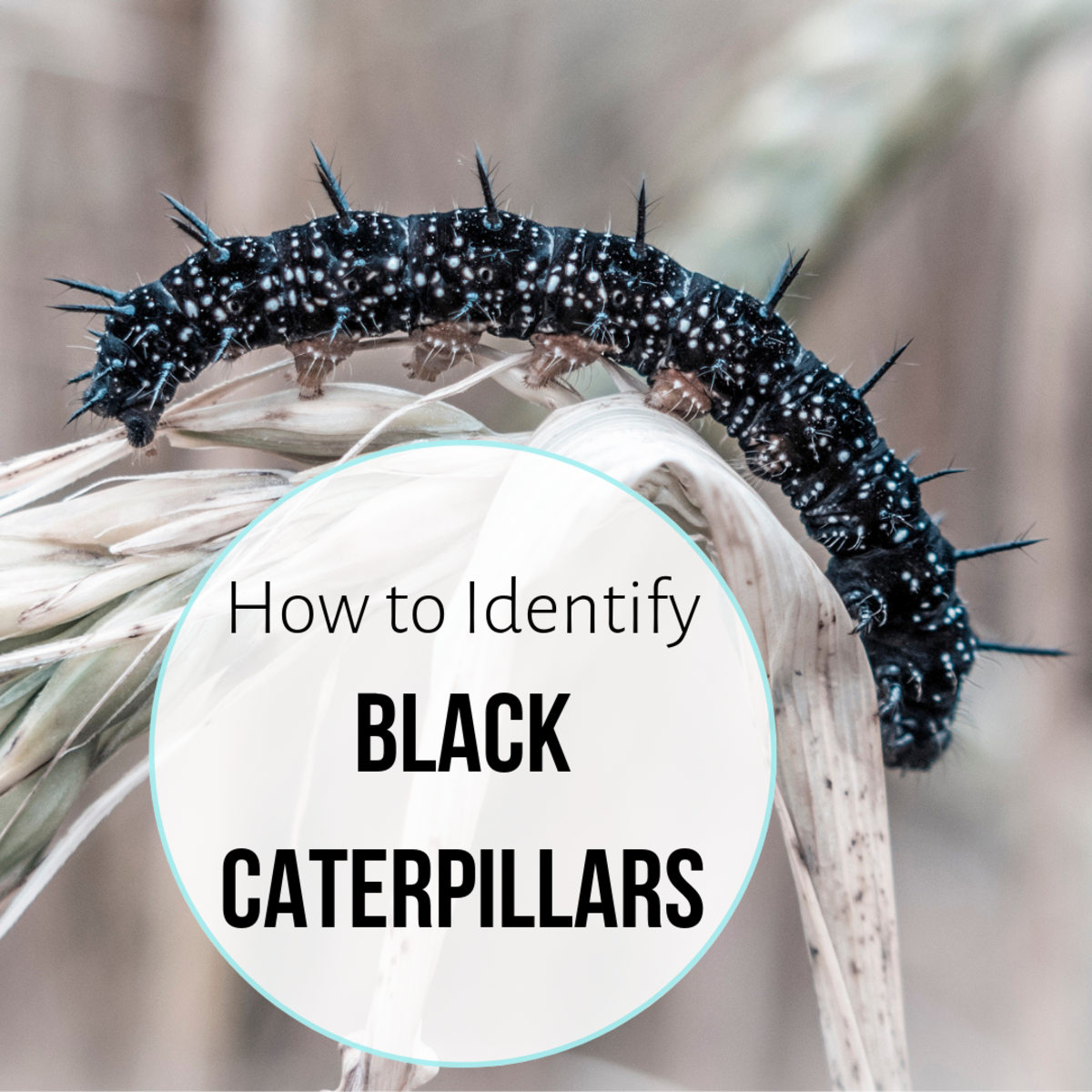
Black Caterpillars An Identification Guide to Common Species Owlcation
Its pale green plump segmented body has small black spines sticking out of it and black markings at its head section. This enormous caterpillar is also identified by a red patch at the end of its body.